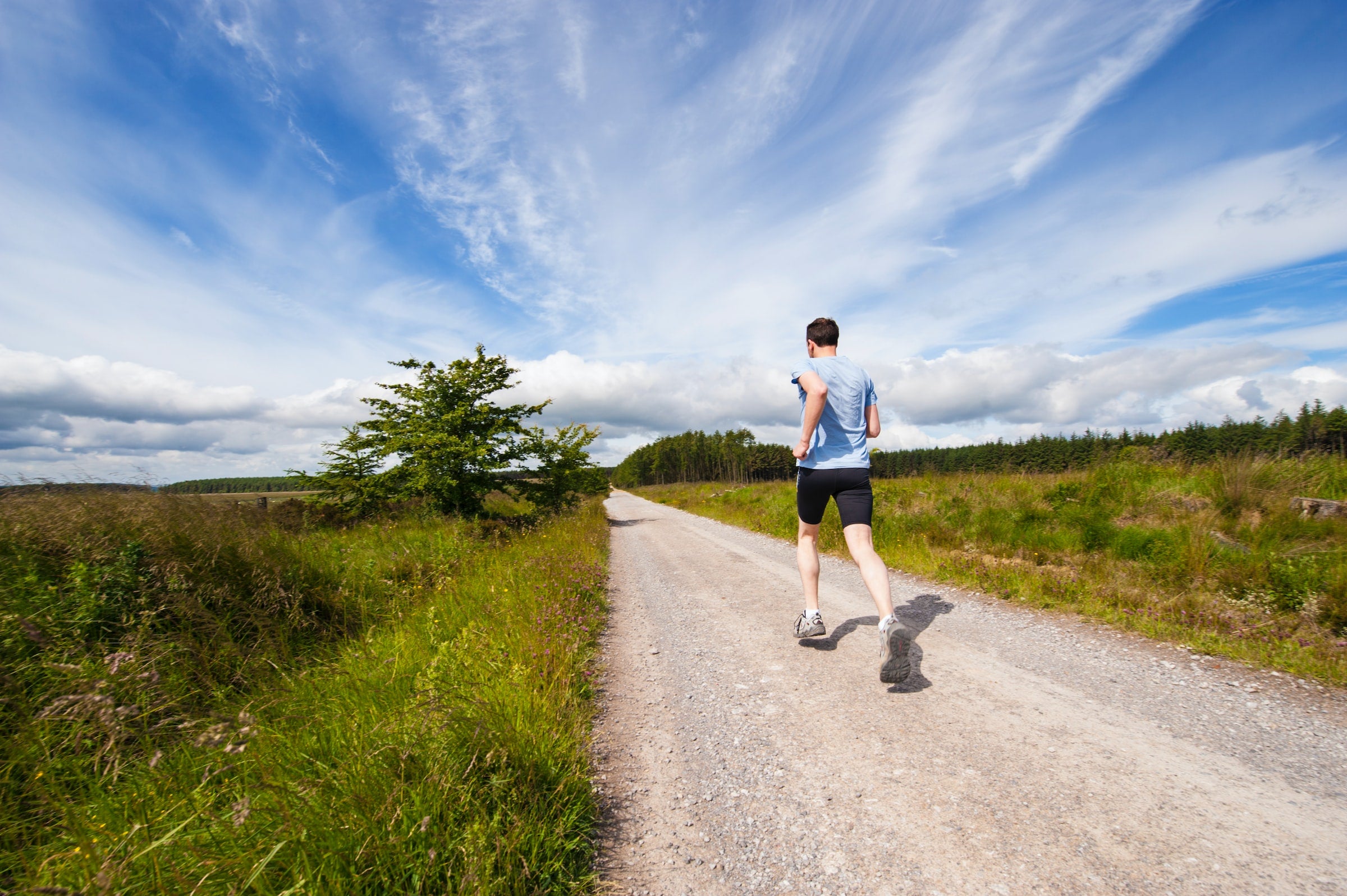Are you interested in trail running but aren't quite sure where to start? It's a great method of running that is beneficial for any level of runner. It can help your training in several ways in addition to giving you the chance to get outside and visit locations ranging from local trails to distant areas all over the planet. An athletic, well-balanced runner can be crafted by twists, elevation changes, and obstacles. In addition, after an intense run, a trail's relatively softer surface may help with recovery. The terrain of a trail also offers less stress which will help one avoid serious injury. Here are five tips to help you get started with trail running:
1. Wear the Right Clothes
The right shoes and socks can make or break your trail-running experience. Shoes designed for trail running will increase your performance while protecting you from injury. A minimalist shoe will highlight how your body reacts to running on the trail, while maximalist shoes will better support your feet and joints with their support. Wear a running sock that wicks moisture and breathes well; a soppy sock will slow you down and cause painful blisters. Your clothing should also be moisture-wicking and prevent you from drowning in sweat. Anticipate bad weather conditions with waterproof clothes, and even adding a layer or two for colder temperatures might prove helpful. The right clothes will boost your performance while keeping you safe.
2. Bring the Right Gear
While you don't want to slow yourself down with a backpack of gear, bringing small or handheld essentials will keep you prepared while not dragging your run. A small, collapsible bottle or hydration pack can help keep you hydrated during any long run. Stay hydrated, as dehydration can lead to cramps, dizziness, and in extreme cases, heat stroke. Bringing a small snack like granola or fruit can help restore your energy levels when you're starting to run on empty. A watch will fit comfortably on your wrist and can help track how long you've been out. Some more advanced watches offer GPS services and can track heart rate levels, as well as calculate calories burned. If you're running at night, bring a small flashlight and wear something reflective.
3. Plan Your Course
You can consult the web, your city or municipality, or local running clubs on which trails are the best and safest for running. On an unfamiliar route, either bring a map with you or run with someone familiar with the area. It's possible to become lost, especially if you're in a strange place, on an unfamiliar trail, or even on a different route than you've usually taken. Carrying a small map in a pocket may prove beneficial. Prepare adequately if you plan on running somewhere for a long time.
4. Pace Yourself
Running effectively on trails is dependent on the terrain. Since most trails you'll find are neither flat nor straight, temper your speed based on how hard it is for you to go uphill, downhill, over obstacles, or around turns. Instead of concentrating on a per-mile pace, focus on running intuitively or making a steady effort. When it comes to your level of fitness and comfort when running over particular terrain elements, your body will know what feels right. By focusing on your technique, you can maximize performance and become an expert on trail running.
5. Keep a Close Eye on Your Surroundings
Running outside exposes yourself to the elements, natural or otherwise. Most trail running accidents happen when a runner looks up briefly and then falls to the ground. This results in a hurt ankle or twisted knee, among other joint injuries. Watch where you are going; you don't want to trip over pebbles, gravel, tree roots, leaves, ice, or cacti. Be fully aware of the terrain you will be walking on. Keep in mind, too, that safety comes in numbers. Running with a friend or a group will protect you from unwanted threats that could pop up when running outdoors. Stay vigilant and always let people know where you plan on running.
You will learn to appreciate your running abilities and the world you live in through trail running. Always remember to stay safe on the trail. Injury can occur if the runner is not careful, does not warm up properly, or is unfamiliar with the trail's location and terrain. A prepared runner is a safe and successful runner.







Leave a comment
This site is protected by hCaptcha and the hCaptcha Privacy Policy and Terms of Service apply.